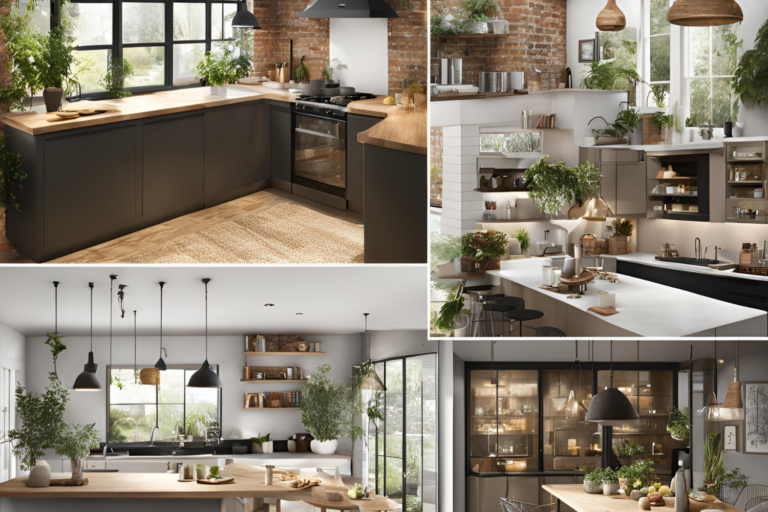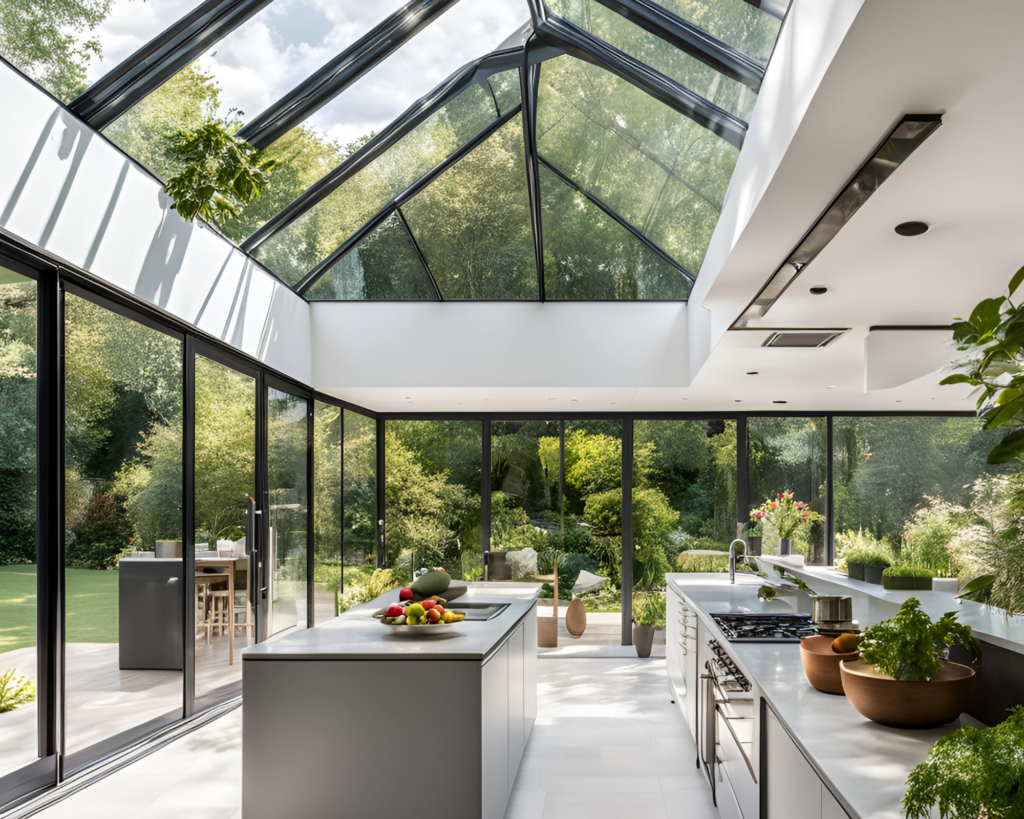
Kitchen Extension: Wondering Which Type is Best for You?
Expanding your kitchen space is one of the most impact-ful home improvement projects you can undertake. A kitchen extension adds value to your property, improves functionality, and enhances your living experience. With various types of kitchen extensions available, choosing the right one for your home can be daunting. This guide will walk you through the different types of kitchen extensions, the pros and cons of each, and how to determine which kind will be the best fit for your needs.
Why Consider a Kitchen Extension?
1. Increase Property Value
One of the top reasons homeowners opt for a kitchen extension is to increase the value of their home. Real estate experts agree that a well-designed kitchen is a key selling point for prospective buyers. Expanding your kitchen can increase your home’s market value by up to 15%.
2. Enhance Functionality
A kitchen extension allows for more room to move around, additional storage options, and even space for extra appliances. If you’re an avid cook, or your kitchen doubles as a dining or entertainment area, an extension can significantly improve your home’s functionality.
3. Create an Open-Plan Living Space
Modern homes often incorporate an open-plan design where the kitchen, dining, and living areas flow into one another. This open space creates a more social environment, allowing the cook to interact with family or guests while preparing meals.
Types of Kitchen Extensions
When it comes to choosing the best type of kitchen extension, there are several options to consider based on your budget, space, and personal preferences.
1. Side Return Kitchen Extension

A side return extension utilizes the space along the side of your home, usually found in semi-detached or terraced houses. This type of extension is ideal for homes with limited width, as it adds space without encroaching too much on your garden.
Pros:
- Cost-Effective: Side return extensions are typically less expensive compared to other types.
- Maintains Garden Space: Since it only extends along the side of your home, it preserves your outdoor area.
- Perfect for Narrow Homes: Ideal for homes where space is limited along the width.
Cons:
- Limited Space Expansion: While useful for smaller homes, the amount of space gained is often limited.
- Planning Permission: Depending on the size and design, you may need planning permission.
2. Rear Kitchen Extension

A rear extension adds space to the back of your home, creating a larger kitchen and often merging it with a dining area or living space. This type of extension is popular in homes with large gardens, as it stretches into your backyard.
Pros:
- Ample Space: Provides a significant amount of extra space, ideal for creating open-plan kitchens or adding extra dining areas.
- Bright and Airy: You can incorporate skylights, glass doors, or large windows, bringing more natural light into your home.
- Highly Customizable: This extension type can be tailored to suit your exact needs, from modern designs to traditional styles.
Cons:
- Loss of Garden Space: Since it stretches into your backyard, you may lose a portion of your outdoor area.
- Higher Costs: Rear extensions can be more expensive, especially if you opt for a larger or more complex design.
3. Wrap-Around Kitchen Extension

The wrap-around extension is a combination of both side return and rear extensions. This type extends along the side and the back of your home, creating an expansive new space perfect for large families or those who entertain often.
Pros:
- Maximizes Space: Provides the most additional square footage of all the extension types.
- Open-Plan Living: Ideal for those looking to create a seamless transition between the kitchen, dining, and living areas.
- Modern Design: A wrap-around extension can create a stunning, contemporary look.
Cons:
- Expensive: Because this extension type covers two sides of your home, it tends to be one of the costliest options.
- Disruption: Due to the larger scale of work, expect a longer construction period and more disruption to your daily life.
4. Single-Storey Kitchen Extension

A single-storey kitchen extension is a straightforward extension that adds extra space to one level of your home. This can be done as either a side return or rear extension but typically remains limited to just one floor.
Pros:
- Simplicity: Single-storey extensions are less complex to design and build, making the process faster and more affordable.
- Great for Bungalows: Ideal for single-storey homes like bungalows, where adding extra rooms is not an option.
- Cost-Effective: Single-storey extensions tend to be less expensive compared to multi-storey options.
Cons:
- Limited Expansion: You won’t get the extra floor space that a two-storey extension would provide.
- Potential for Overcrowding: If not well-planned, a single-storey extension could make your home feel cramped.
5. Two-Storey Kitchen Extension

A two-storey kitchen extension adds space not just to the kitchen but also to the floor above. This type of extension is ideal for those who need both extra kitchen space and additional living areas, bedrooms, or bathrooms upstairs.
Pros:
- Maximizes Space: You get more space on two levels, which can be perfect for growing families.
- Increased Home Value: The extra rooms on the second floor can significantly increase your home’s resale value.
- Multifunctional: The additional floor can be used for bedrooms, offices, or even entertainment rooms.
Cons:
- Higher Costs: Naturally, a two-storey extension is more expensive than a single-storey one.
- Planning Permission: In most cases, you will require planning permission for a two-storey extension, which can add time and complexity to your project.
6. Conservatory Kitchen Extension

A conservatory kitchen extension brings light and nature into your home, as it’s typically built with glass walls or roofing. These extensions work well for homeowners who want to merge their indoor and outdoor spaces.
Pros:
- Natural Light: A conservatory is filled with natural light, making your kitchen feel more open and inviting.
- Connection to the Outdoors: With large glass doors and windows, you can enjoy a seamless connection to your garden.
- Aesthetic Appeal: Conservatories are visually appealing and can add a unique charm to your home.
Cons:
- Temperature Control: Conservatories can be too hot in summer and too cold in winter without proper insulation or heating.
- Not Suitable for All Climates: In areas with extreme weather, maintaining a comfortable temperature in a conservatory can be challenging.
How to Choose the Right Kitchen Extension
With so many options available, how do you choose the right kitchen extension for your home? Here are some factors to consider:
1. Your Budget
Your budget will largely determine which type of kitchen extension is suitable for you. A side return extension or single-storey extension is often more affordable, while a wrap-around or two-storey extension will cost more. Be sure to factor in not only construction costs but also expenses for interior design, permits, and possible unforeseen issues.
2. Available Space
The size and shape of your property will influence which type of extension is feasible. If you have a narrow lot, a side return extension may be ideal, while a rear extension works well if you have a large garden.
3. Your Lifestyle
Consider how you use your kitchen. Do you need more space for entertaining? Would an open-plan kitchen make daily life more enjoyable? A wrap-around extension might be perfect for creating a social hub, while a conservatory extension is great if you love a bright, nature-inspired space.
4. Long-Term Plans
If you plan to stay in your home for the long term, investing in a two-storey extension or larger wrap-around extension may be worth the expense. However, if you only plan to stay for a few years, a simpler, less costly side return or rear extension may suffice.
Conclusion
A kitchen extension can transform your home, making it more spacious, functional, and valuable. Whether you choose a side return, rear, wrap-around, or two-storey extension, the key is to select an option that fits your budget, lifestyle, and long-term goals. With the right design and careful planning, your kitchen extension will enhance your home’s beauty and functionality for years to come.

